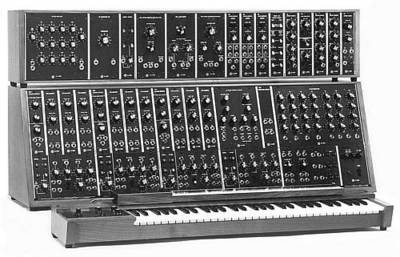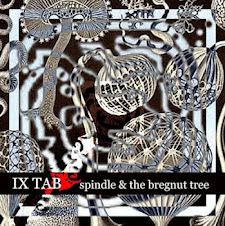"Well yes", Paul (Rothchild, the producer) said. "Actually that sound you had about three sounds back was very usable. Could you go back to that?"
"Which sound was that?" said Paul Beaver.
"That crystalline sound," Jim (Morrison) jumped in. "I liked the sound of broken glass falling from the void into creation".
"Which sound was that?" said Paul Beaver.
"A couple back from where you are now," Rothchild said.
"It reminded me of the Kabbalah", said Jim. "Kether, the I AM, creating duality out of the one. All crystalline...and pure. You know, that sound."
"Did I make a sound like that?"
"Sure", said Jim. "A couple back."
"Just go back where you were", said Rothchild.
And Paul Beaver began to unplug and replug patch cords, and twist little knobs, and strike the keyboard, which emitted strange and arcane and utterly unearthly tones that sounded nothing like the Kabbalah or Kether; the crown of the Sefiroth. None of the sounds he was creating sounded pure and crystalline. And then we realized...he couldn't get back.
Finally, with Paul Beaver ripping and tearing at his cords and twisting knobs at an increasingly furious pace, sweat dripping from his forehead, ungodly shrieks emanating from his keyboard, Rothchild shouted out, "Stop! Wait a second. Just stop there."
The possibilities were endless. The permutations were infinite. And the Beaver seemed as if he was going to try them all, as we watched, going slowly insane.
"Just stop, Paul. That's a good sound there. I think we can use that." A great sigh of relief emitted from the Doors' group mind.
Extract from "Light My Fire: My Life with the Doors" by Ray Manzarek.

As the premier (and for a time only) Moog synthesiser session player on America's West Coast in the late '60s, Paul Beaver was regularly called on provide electronic sounds for the hip recordings of the day. Everyone from the Byrds, the Monkees, Crosby, Stills, Nash & Young, Frank Zappa and the Beach Boys wanted a piece of the Moog magic. Soon working with his younger partner Bernie Krause, Beaver was concocting the strangest, most way-out electronica as a matter of daily routine. It was Krause who switched George Harrison onto the Moog, resulting in George's awful solo album "Electronic Sounds" (ripping-off Krause's ideas into the bargain). Even the Stones bought a Moog, but couldn't be bothered to learn how to use it, so they sold it at a cut price to an unknown German musician called Florian Fricke, who used it to full effect on the early Popul Vuh albums. When he got bored with it, he sold it on to Tangerine Dream. There lies a whole other story.
Some of the weirdest shit Beaver was involved with were the small projects like percussionist Emil Richards' "Stones" album, based around the concept of the twelve birthstones. Richards has claimed that this was the first West Coast record to use a Moog (narrowly beating The Zodiac's "Cosmic Sounds" - which also featured both Beaver and Richards). It's a fucking mad record, no mistake. Vaguely psychedelic, percussion-heavy, with strong leanings towards exotic easy listening, with Beaver's rampant ring-modulated Moog riffs making a glorious din over the top. They just don't make 'em like that anymore.
Emil Richards - Ruby (July)
Beaver and Krause eventually got to make a few records of their own, such as the totally experimental "Nonesuch Guide To Electronic Music" (1968) which is possibly the only technical manual in the history of recorded music to sell in large quantities. They also made more musical albums like "In A Wild Sanctuary". (1970) They were the only act that New York-based Transexual Moog-virtuoso Wendy Carlos took seriously. Before the hard-wired Minimoog ushered in the age of the 'user-friendly' (or should that be 'musician-friendly') portable synth, Beaver and Krause remain pioneers of the early days of the giant modular systems, where any sound was possible, if you knew where to patch your cords...
Futher reading: Analog Days: The Invention And Impact Of The Moog Synthesizer by Trevor Pinch and Frank Trocco.




















No comments:
Post a Comment